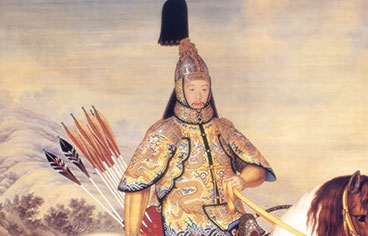Insights | By Howard Tiersky
WHAT 18TH CENTURY CHINA CAN TEACH YOU ABOUT YOUR DIGITAL TRANSFORMATION
Leaders of digital transformation often struggle against change-resistant executives and cultures. But this is nothing new, and companies facing the risks of failure to change can learn something from history, such as this story from Imperial China.

The Qing Dynasty ruled China during the 18th century, a time when each new emperor was selected from amongst the royal family based on merit. In 1736, it was the fifth son of the recently deceased ruler who won the competitive succession process and became known as the Qianlong Emperor.
What merit did the Qianlong Emperor possess that earned him the throne? Among other skills, he was an expert archer, winning many competitions with his longbow.
Flash forward 57 years. A diplomatic team from England, known as the Macartney Mission, is sent to China by the infamous King George III to negotiate trade agreements with the Qianlong Emperor. The delegation arrived with a proposal to trade China large quantities of British guns for the royal army in exchange for items that were desirable in the West.
Although China had invented gunpowder almost 1,000 years earlier, as of the 18th century, Chinese manufacturing of guns was still primitive and their weapons far inferior to those made in England.
But that didn’t matter much to the Qianlong Emperor, who was largely uninterested in guns and preferred to equip his armies with his beloved longbows. In fact, he had discouraged divisions of his military that were experimenting with improving Chinese firearm design and manufacturing.
When shown a demonstration of how easily and reliably the British rifles being offered in trade could be aimed, fired, and reloaded, he is reported to have remarked that they seemed more like a weapon “for children,” not for serious warfare.
At the end of the visit, the emperor wrote a letter to King George as formal rejection of the British proposal that stated: “I set no value on your objects strange or ingenious and have no use for your country’s manufactures.”

Thirty years later, China was under near total British control, subdued by those superior European firearms during the Opium Wars.
Back at the time of the Macartney Mission, China’s economy was the largest in the world. By the end of the Opium Wars, the Chinese had largely lost sovereignty over their own country, and ten years after that, the country’s gross domestic product had fallen by half. As a consequence, the Qing Dynasty was the last of China’s 12 imperial dynasties that had collectively ruled China for over 2,100 years.
The Qianlong Emperor was a powerful leader, but he made the fatal mistake of failing to recognize the rapid change that was happening in the world, and that brought about his downfall. Today, the world is changing rapidly once more, and companies that cannot see that and fail to transform to adapt will inevitably suffer the same fate.

My new book, WINNING DIGITAL CUSTOMERS, talks extensively about digital transformation and offers fresh insights on how companies can innovate to thrive in today’s digital world, and how you can fight the kind of “resistance to change” that was present in 18th century China and is also probably present at your company. You can get FREE ACCESS to the first chapter by clicking this link https://wdc.ht/freechapter.





